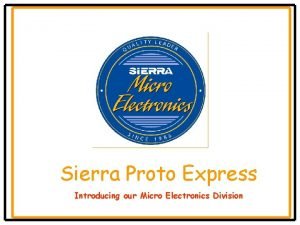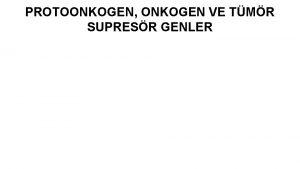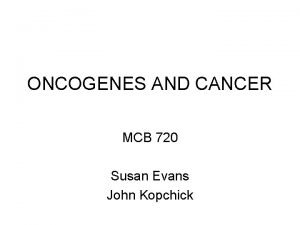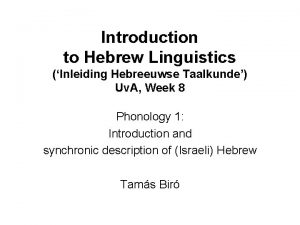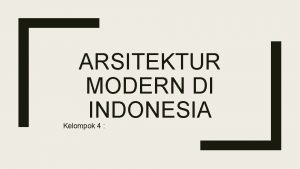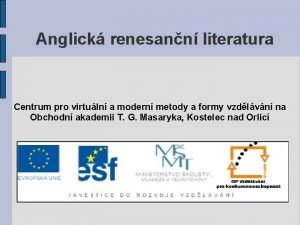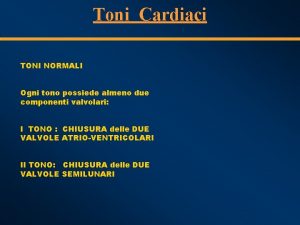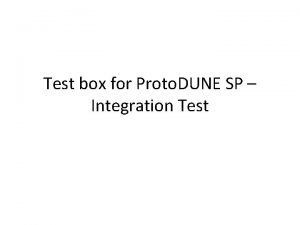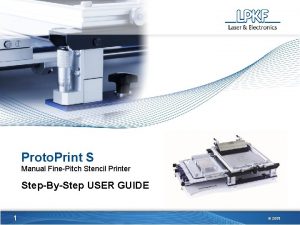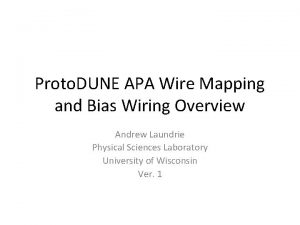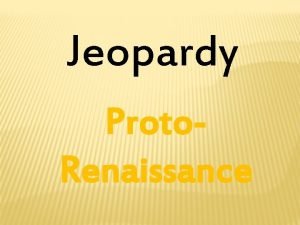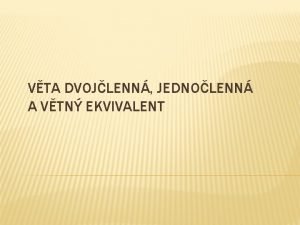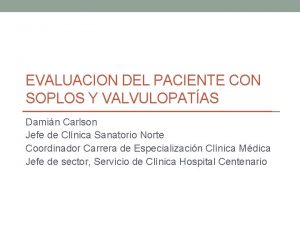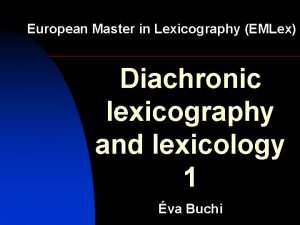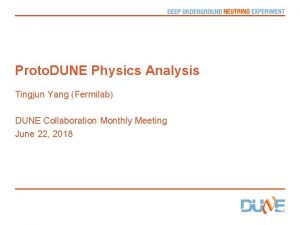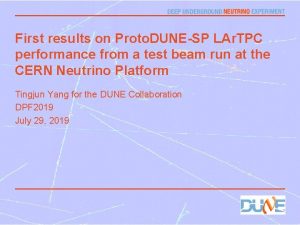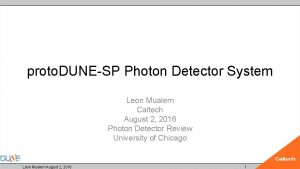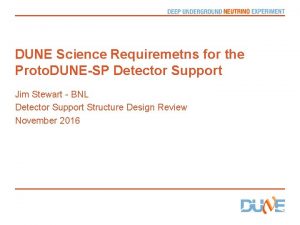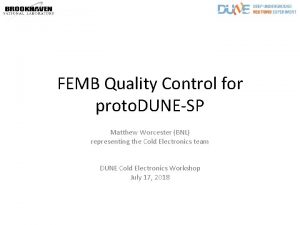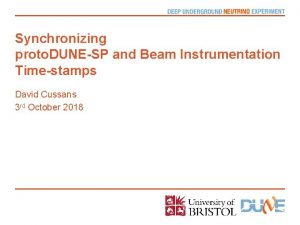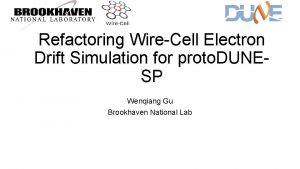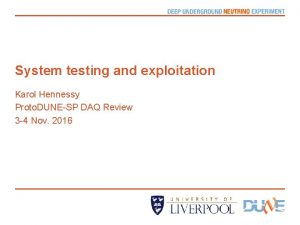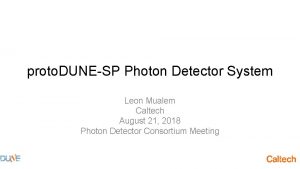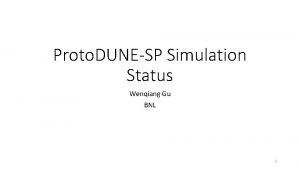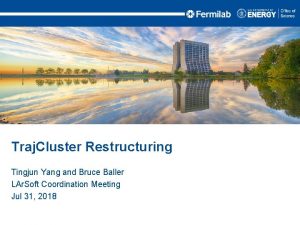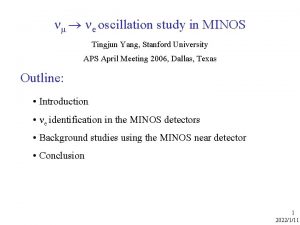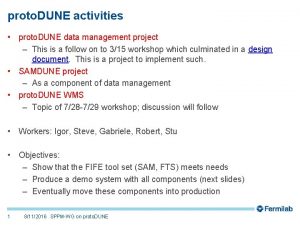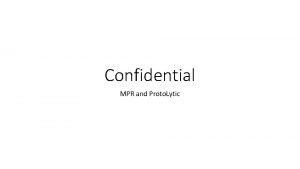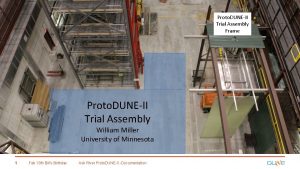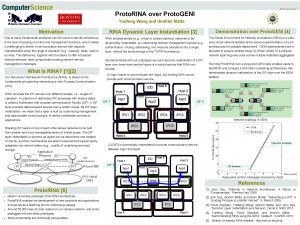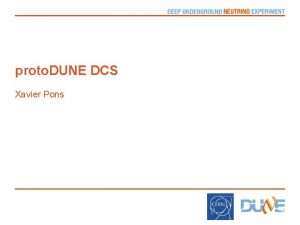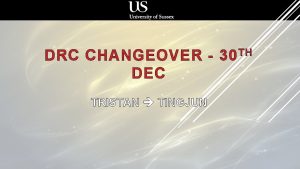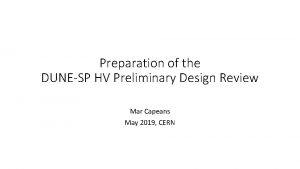Proto DUNESP First Look at Data Tingjun Yang
























- Slides: 24

Proto. DUNE-SP: First Look at Data Tingjun Yang (Fermilab) LBNC review Oct 15, 2018

What can we learn from Proto. DUNE? DUNE FD Proto. DUNE • Detector Performance – Signal-to-Noise ratio DQM – Modeling of detector response • LBL Physics Calibration – Electron energy reconstruction – Muon momentum reconstruction • Nucleon Decay Search Reconstruction – Kaon reconstruction • Supernova Neutrino Search – ~10 Me. V electron reconstruction 2 10/15/18 Proto. DUNE-SP: First Look at Data Analysis

The Proto. DUNE SP DRA Organization • DRA – Detector Reconstruction and Analysis • DRA Level 1 – overall responsibility on code development and organizing analysis effort - T. Yang (FNAL) - G. Christodoulou (CERN) • DRA Level 2 - Reconstruction – L. Whitehead (CERN) - DQM – M. Potekhin (BNL) - Calibration – M. Mooney (CSU) - Analysis – S. Bordoni (CERN) Weekly meeting on Wednesday 9: 30 am Fermilab time, 4: 30 pm CERN time Mailing list: dune-proto-sp-dra@fnal. gov https: //web. fnal. gov/collaboration/DUNE/Site. Pages/Proto. DUNEs%20 simulation%20 and%20 reconstruction%20 activities. aspx 3 10/15/18 Proto. DUNE-SP: First Look at Data

Proto. DUNE Analysis Goals • Short-term goals – detector performance - Dead channels, noisy channels - Noise level, signal to noise ratio - Electron lifetime • Medium-term goals – detector response Information for DUNE physics TDR - d. E/dx of pions, protons, kaons, electrons - Energy and momentum resolutions • Long-term goals – cross sections - Inclusive pion cross section - Exclusive channels – charge exchange, etc. 4 10/15/18 Proto. DUNE-SP: First Look at Data Physics publications

Outline • Results of detector performance - Noise level, signal to noise ratio - Electron lifetime • Preparation for data analysis - Beam-TPC information matching - Sticky code mitigation - Electronics calibration - Space Charge calibration - Muon based calibration - TPC reconstruction - Photon detector analysis • Event displays 5 10/15/18 Proto. DUNE-SP: First Look at Data

Noise level • Noise level - Collection: 3. 5 ADC (500 e) - Induction: 4. 5 ADC (600 e) • Preliminary results show 99. 7% of 15, 360 channels are alive 6 10/15/18 Proto. DUNE-SP: First Look at Data

Signal-to-noise ratio Beam APA 5 APA 6 APA 4 APA 3 APA 2 APA 1 • Signal to noise ratio from DQM: ~50 in collection channels in all APAs 7 10/15/18 Proto. DUNE-SP: First Look at Data

Electron lifetime Beam APA 5 APA 6 APA 4 APA 3 APA 2 APA 1 • Purity monitored by both purity monitors and muons 8 10/15/18 Proto. DUNE-SP: First Look at Data

Outline • Results of detector performance - Noise level, signal to noise ratio - Electron lifetime • Preparation for data analysis - Beam-TPC information matching - Sticky code mitigation - Electronics calibration - Space Charge calibration - Muon based calibration - TPC reconstruction - Photon detector analysis • Event displays 9 10/15/18 Proto. DUNE-SP: First Look at Data

Beamline Information • Beamline information is saved to DIP database at CERN and then copied to IFBeam database at Fermilab. - Save beamline information for online monitoring and offline analysis: particle direction, momentum, PID with Cerenkov Detectors, Time of Flight Measurements. - Matching TPC beam events to tracks in beamline. Mean = 6. 71 Ge. V RMS = 0. 4 Ge. V 8 hrs of data taking at 7 Ge. V. 10 10/15/18 Proto. DUNE-SP: First Look at Data

Sticky Code Mitigation • Sticky code - the 6 LSBs in ADC ASIC was found to be “sticky” around 000000 (0 x 00) or 111111 (0 x 3 F). • Can be mitigated through linear interpolation. • A new method is developed to interpolate through FT. • The current focus is on noise mitigation and deconvolution. 11 10/15/18 Proto. DUNE-SP: First Look at Data

ADC gain and linearity • Using pulser data to measure ADC gain and linearity. • Analysis of a recent pulser run 4565. • Gain variation is ~5% over all channels. 12 10/15/18 Proto. DUNE-SP: First Look at Data

Space Charge Simulation with LAr Flow • We now simulate SCE using the space charge density map with LAr flow - first study of LAr flow on SCE • Very different distributions in the two drift volumes • Essential to have data-driven calibration Spatial distortion maps 13 10/15/18 Proto. DUNE-SP: First Look at Data

Detector Calibration with Muons • Similar procedure developed by Micro. Boo. NE: Micro. Boo. NE-NOTE 1048 -PUB (2018). d. Q/dx calibration • Tools are developed using MC. • d. Q/dx calibration using throughgoing muons - Remove spatial and temporal variations in detector response - Calibration constants are being uploaded to database by Jon Paley • d. E/dx calibration using stopping muons - Determine absolute energy scale using muon stopping power - More details in DRA meeting next week 14 10/15/18 Proto. DUNE-SP: First Look at Data d. E/dx calibration

Pandora Reconstruction • Pandora pattern recognition algorithms are being optimized for data. Preliminary results look good. 15 10/15/18 Proto. DUNE-SP: First Look at Data

Photon Detector Analysis • The PDS system is operational: we see both beam particles and cosmicray muons. • All SSP modules are operational and reading back. • Very few dead/noisy channels. Mean ADC Sum vs. Energy APA 3 Arapuca Mean ADC Sum (x 104) Mean. ADC 5 4, 5 4 3, 5 3 2, 5 2 1, 5 1 0, 5 0 0 16 10/15/18 1 2 3 4 5 6 Beam momentum (Ge. V/c) Proto. DUNE-SP: First Look at Data 7 8

Outline • Results of detector performance - Noise level, signal to noise ratio - Electron lifetime • Preparation for data analysis - Beam-TPC information matching - Sticky code mitigation - Electronics calibration - Space Charge calibration - Muon based calibration - TPC reconstruction - Photon detector analysis • Event displays 17 10/15/18 Proto. DUNE-SP: First Look at Data

Run 5244, Event 10488, 1 Ge. V 18 10/15/18 Proto. DUNE-SP: First Look at Data

Run 5235, Event 10190, 1 Ge. V 19 10/15/18 Proto. DUNE-SP: First Look at Data

Run 5240, Event 6656, 1 Ge. V 20 10/15/18 Proto. DUNE-SP: First Look at Data

Run 5144, Event 47293, 7 Ge. V 21 10/15/18 Proto. DUNE-SP: First Look at Data

Run 5145, Event 81569, 7 Ge. V 22 10/15/18 Proto. DUNE-SP: First Look at Data

Run 5203, Event 1290, 7 Ge. V 23 10/15/18 Proto. DUNE-SP: First Look at Data

Conclusions • The first look at data looks very promising - Very low noise level and very high signal-to-noise ratio - Very few dead/bad channels • We are able to reconstruct tracks with just a few tweaks to the reconstruction algorithms. - Current focus is on low level reconstruction • We have developed tools for detector calibration using MC. • More results on calibration and cross sections will arrive. 24 10/15/18 Proto. DUNE-SP: First Look at Data
 Look to the left look to the right
Look to the left look to the right Part time jobs
Part time jobs Proto express
Proto express Holo proto meso tele
Holo proto meso tele Protooncogens
Protooncogens Difference between proto oncogene and oncogene
Difference between proto oncogene and oncogene Vowel phonological processes
Vowel phonological processes Proto siva
Proto siva Angela proto
Angela proto Proto barroco
Proto barroco Perkembangan arsitektur modern di indonesia
Perkembangan arsitektur modern di indonesia A proto odpouští má láska mému koni
A proto odpouští má láska mému koni Proto-evangelium meaning
Proto-evangelium meaning Toni cardiaci normali
Toni cardiaci normali Steven proto
Steven proto Proto print
Proto print Apa wire
Apa wire Proto renaissance art
Proto renaissance art Shoen family tree
Shoen family tree Zbyškovi bylo smutno
Zbyškovi bylo smutno Donatella proto
Donatella proto Proto oncogene
Proto oncogene Arti kata near pada sebuah kata nirleka
Arti kata near pada sebuah kata nirleka Soplos
Soplos Latin and romance languages
Latin and romance languages


